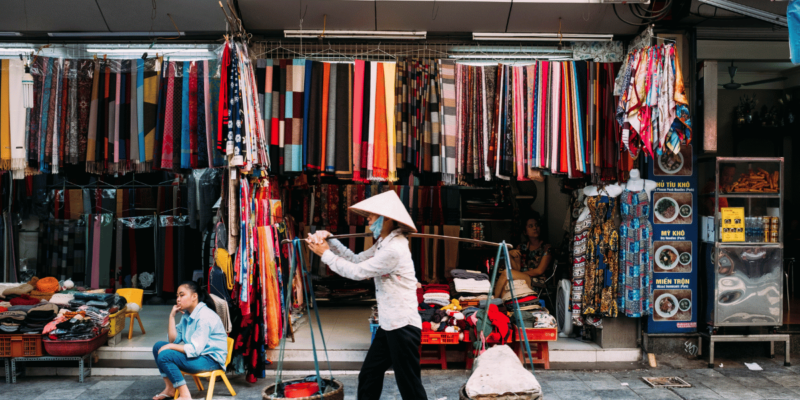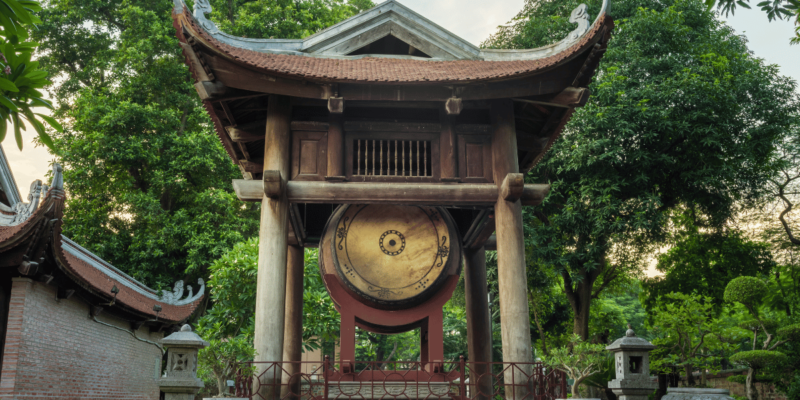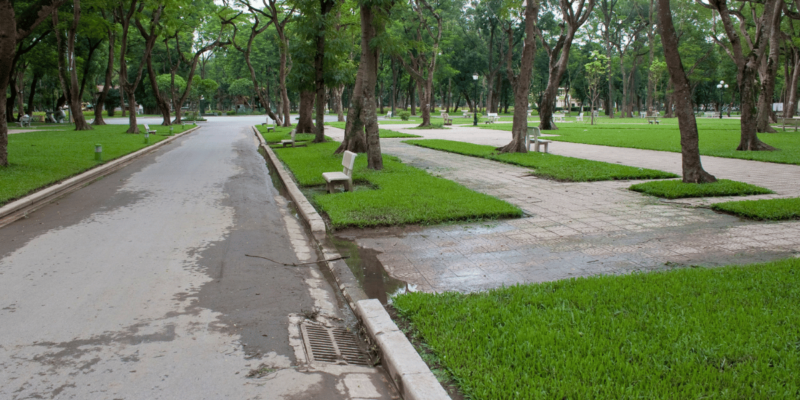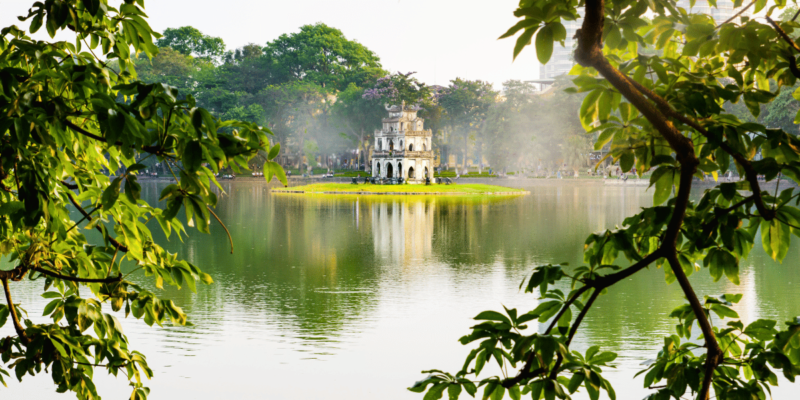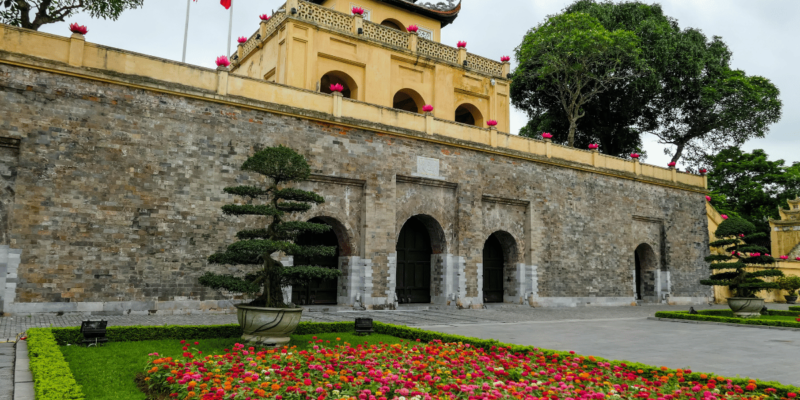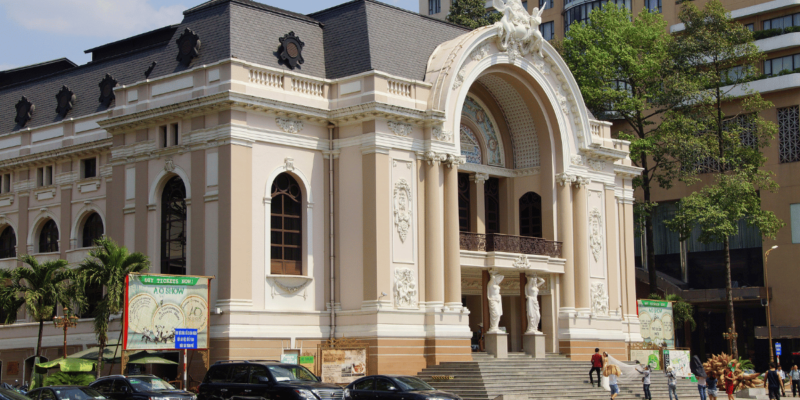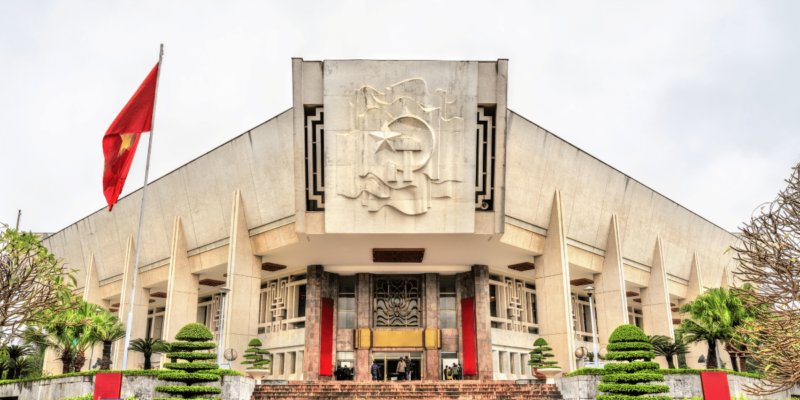Exploring the Ho Chi Minh Mausoleum Complex in Hanoi
The Ho Chi Minh Mausoleum: At the heart of Hanoi, this grand structure houses the embalmed body of Ho Chi Minh, Vietnam’s revered leader, affectionately known as Uncle Ho. Despite his wish to be cremated, his body was preserved to maintain national morale during challenging times. The mausoleum, a striking example of Soviet-era architecture, draws visitors not only for its historical significance but also for the somber, respectful experience of viewing Ho Chi Minh’s final resting place. Guards in pristine white uniforms enhance the solemn atmosphere with their precise drills.
Visiting Hours and Regulations: Open from 8:00 AM to 11:00 AM, Tuesday to Thursday and during weekends, visitors must adhere to strict rules—no photography, and personal belongings must be stored before entering. The experience, while macabre to some, is profoundly moving, reflecting the deep respect the Vietnamese have for their former leader.
The Stilt House and Presidential Palace: A stark contrast to the mausoleum’s grandeur is Ho Chi Minh’s simple stilt house. Reflecting his modest lifestyle and work ethic, the house is styled after ethnic minority dwellings and features minimalistic furnishings. It overlooks a tranquil carp pond, and his desk is adorned daily with his favorite white blossoms. Nearby, the opulent Presidential Palace, formerly the residence of the Governor-General of Indochina, stands as a reminder of the colonial era but is not open to the public.
Ho Chi Minh Museum: Close to the stilt house, this museum offers an in-depth look at Ho Chi Minh’s life, his revolutionary activities, and his vision for Vietnam, albeit glossing over some controversial aspects of his past. It serves as an educational complement to the mausoleum visit, providing visitors with context about his significant impact on Vietnamese and global history.
Other Nearby Attractions: The complex also includes the One Pillar Pagoda, an iconic but modern replica that might underwhelm some visitors expecting ancient grandeur. However, its symbolic design and historical value as a place of peace and meditation continue to attract tourists.
Da Dinh Square and the Citadel: The square in front of the mausoleum leads visitors past the Tomb of the Unknown Soldier, a poignant tribute to Vietnam’s fallen soldiers, beautifully illuminated at night. A short walk further brings you to the ongoing transformations at the Hanoi Citadel. This historic site is gradually being turned over to civilian control, with newly accessible pagodas and ongoing excavations revealing treasures from the Ly Dynasty, offering insights into Vietnam’s millennium-old history.
Future Developments: Plans are underway to open more of the Citadel, including the remnants of the Forbidden City, to the public after restoration, promising even richer explorations for visitors in the future.
Commemorative and Reflective: A visit to the Ho Chi Minh Mausoleum area is not just a tour; it’s a journey through the legacy of a leader who shaped modern Vietnam. It offers a profound look at the nation’s history, cultural reverence, and the ongoing preservation of its historical sites.

